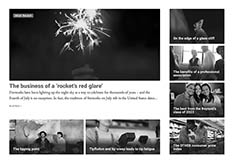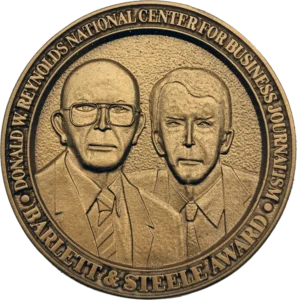The Society of Professional Journalists (SPJ) Code of Ethics tells reporters to “Boldly tell the story of the diversity and magnitude of the human experience. Seek sources whose voices we seldom hear.”
But following this practice is easier said than done, and despite the existing progress toward justice and diversity in journalism, newsroom professionals agree that there’s still a long way to go. That’s why the Society for Advanced Business Editing and Writing (SABEW) hosted a virtual discussion on Aug. 15 titled “Still Work to Do: Elevating Diversity in Journalism.”
Imani Moise, personal economics reporter for The Wall Street Journal and vice chair of the National Association of Black Journalists (NABJ) business journalism task force, moderated the talk. The panel consisted of Ali Jackson-Jolley, assistant managing editor at Forbes who oversees its diversity, equity and inclusion (DEI) initiatives; Naomi Ishisaka, assistant managing editor for diversity, inclusion and staff development at the Seattle Times; Olivia Santiago, recruitment lead at Bloomberg; and Bowdeya Tweh, the Chicago bureau chief of The Wall Street Journal and chair of the NABJ business journalism task force.
Drawing from their expertise and experience in the workplace, these business journalism professionals talked through the current state of newsroom diversity, strategies for diversifying newsroom leadership and why diversity will be necessary in the future.
Where we are now
Ishisaka said that DEI in newsrooms was on the upswing in the late 1990s, but it came to a screeching halt because of economic conditions.
“And then, about 10 years later with 2008 and the recession, all that just sort of bottomed out and just collapsed,” she said. “So, it’s like last hired first fired, you saw huge numbers of staff of color being laid off. You saw a lot of these things that we thought were imperative – but were seen then as nice to have and not absolutely necessary for the bottom line – kind of get chipped away or removed.”
Now, Ishisaka said, the goal is to make newsroom diversity sustainable – and to view it as an essential component of the news business instead of an add-on.
“It has to be something that is intrinsic in your operation and something that you think is absolutely necessary for your survival,” she said.
Diversity isn’t just about reporters
A major part of newsroom diversity is a distinct effort to recruit members of historically marginalized groups into managerial positions.
Tweh says that to do that, news organizations have to provide a pathway to those already working at that outlet.
“There usually has to be a level of training and development and sort of career coaching that enables a person to sort of ascend within an organization,” he said.
Santiago pointed to several strategies to get this process going.
“On the internal side, it’s making sure that you have opportunities for learning and development, having regularly scheduled check-ins with talent, internal watch lists,” she said. “Really making sure that, when you have good internal mobility practices, that they’re fair – that they’re transparent.”
Ultimately, diversity in managers and editors is about handing editorial discretion to those with a wide array of perspectives.
Future media representation
According to a report from the U.S. Census Bureau, “non-Hispanic Whites are projected to remain the single largest race group throughout the next 40 years. Beginning in 2045, however, they are no longer projected to make up the majority of the U.S. population.”
For that reason, Jackson-Jolley, the Forbes editor, says it’s imperative that newsrooms provide accurate representation of the communities they serve.
“Any news journalist knows that you cannot be a trusted media entity if you are not having the voices that [speak] to your audience,” she said.
The 2024 salary and demographic survey conducted by the Reynolds Center indicates that the business journalism field is going in this direction.
“While 85.3% of journalists who were 35 and older selected White as their sole race/ethnicity, only 70.5% of journalists under the age of 35 selected White,” the survey results showed. “For journalists under 30, that number drops down to 57.8%.”
Whether it’s developing pipelines for up and coming journalists or having conversations about group identities, efforts to strengthen diversity in the news industry are likely to persist for years to come.











